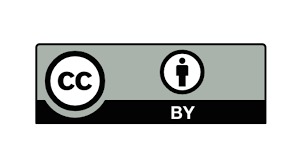Identification of mathematical processes in the understanding of the concept of reason in university students
Identificación de procesos matemáticos en la comprensión del concepto de razón en estudiantes universitarios
Main Article Content
In this article we describe and analyze the development of a class experienceof a course of differential calculus of the first semester of the university in which differentconcepts about functions are approached with emphasis on the mathematical conceptof reason from its application for the resolution of everyday problems. The research isof a qualitative nature and is based on the analysis of the arguments (verbal or graphic)given by the students in an online discussion forum and during the development ofthe class. The data comes from recordings of the class episode and the interactionin the forum by the students. For the analysis, he applied the theoretical coding technique,specifically to open coding, in which the main concepts and their properties containedin the data are identified. The results show some difficulties that students face in thestudy of differential calculus in relation to the concept of reason, which is consideredbasic for the understanding of other more complex notions, such as limits. The answersgiven in the activity denote that beyond the algorithmic management of the fractionsand the conversion between different semiotic registers, such as the percentage or thedecimal, there is not a sufficiently solid awareness about the nature and applicability of these calculations.
Downloads
Article Details
Badillo, E., Figueiras, L., Font, V. y Martínez, M. (2013). Visualización gráfica y análisis comparativo de la práctica matemática en el aula. Enseñanza de las ciencias, 31(3), 207-225.
Bedoya, E. y Rico, L. (1998). Calculadoras graficadoras y enseñanza de matemáticas en secundaria. En Thales (Ed.), Actas del IV Simposio sobre Investigación en el Aula de Matemáticas(pp. 113-131). Granada: Autor
Breda, A. y Lima, V. (2016). Estudio de caso sobre el análisis didáctico realizado en un trabajo final de un máster para profesores de matemáticas en servicio.REDIMAT, 5(1),74-103. http://repositorio.pucrs.br/dspace/bitstream/10923/8815/2/Estudio_de_caso_sobre_el_analis_didactico_realizado_en_un_trabajo_final_de_un_master_para_profesores_de_matematicas_en.pdf
Contreras, A., García, M. y Font, V. (2012). Análisis de un proceso de estudio sobre la enseñanza del límite de una función. Bolema, 26(42b), 667-690.
Cortés, C., Guerrero, L., Morales Ch., y Pedroza, L. (2014). Tecnologías de la información y la comunicación (TIC). aplicaciones tecnológicas para el aprendizaje de las matemáticas. Unión: Revista Iberoamericana de Educación Matemática, 39, 141-161.
Davis, R. B. (1992). Reflections on where Mathematics now stands and on where it may be going. En D. A. Grouws (Ed.), Handbook of Research on Mathematics Teaching and learning (p.724-734). Nueva York, Mcmillan Publishing Company.
D’Amore, B. y Fandiño, M. (2015). Propuestas metodológicas que constituyeron ilusiones en el proceso de enseñanza de la matemática. Educación matemática, 27(3), 7-43. Disponible en: http://www.redalyc.org/articulo.oa?id=40544202001
Espinoza, C. y Jiménez, A. (2014). Construcción del concepto de razón y razón constante desde la óptica socioepistemológica. Praxis y saber, 5(9), 53-80.
Flick, U (2007). Introducción a la investigación cualitativa. Madrid: Morata.
Font, V. y Contreras, A. (2008). The problem of the particular and its relation to the general in mathematics education. Educational Studies in Mathematics, 69, 33-52.
Font, V., Godino, J. y Contreras, A. (2008). From representation to onto-semiotic configurations in analysing mathematics teaching and learning processes. En L. Radford, G. Schubring, y F. Seeger (eds.), Semiotics in Mathematics Education: Epistemology, History, Classroom, and Culture (pp. 157–173). Rotterdam, Holland: Sense Publishers.
Font, V., Planas, N. y Godino, J. (2010). Modelo para el análisis didáctico en educación matemática. Infancia y aprendizaje, 33(1), 89-105.
Font, V., Godino, J. y Gallardo, J. (2013). The emergence of objects from mathematical practices. Educational Studies in Mathematics, 82(1), 97-124.
Font, V. (2015). Pauta de análisis y valoración de la idoneidaddidáctica de procesos de enseñanza y aprendizaje de la matemática [Guideline for the analysis and assessment of the didactical suitability of the mathematics teaching and learning processes]. Unpublishedmanuscript. Barcelona: Departamento de Didáctica de las CCEE y la Matemática, Universitat de Barcelona.
Godino, J. y Batanero, C. (1994). Significado institucional y personal de los objetos matemáticos. Recherches en Didactique des Mathématiques,14(3), 325-355.
Godino, J., Font, V., Wilhelmi, M. &Lurduy, O. (2009). Systems of practices and configurations of objects and processes as tools for the semiotic analysis in mathematics education. Semiotic Approaches to Mathematics, the History of Mathematics and Mathematics Education. 3rd Meeting. Aristotle University of Thessaloniki. July 16-17.
Greer, B. (1992). Multiplication and division as models of situations. In D. A. Grouws (Ed.). Handbook of research on mathematics teaching and learning. (pp. 276-295). New York: Macmillan Publishing Company.
Linares, S. y Sánchez, M. V. (1990). Teoría y práctica en educación matemática. Sevilla: Alfar.
NCTM (1992). Estándares curriculares y de evaluación para la educación matemática. Sevilla: SAEM Thales.
Pochulu, M. y Font, V. (2011). Análisis del funcionamiento de una clase de matemáticas no significativa. RELIME - Revista latinoamericana de investigación en matemática educativa, 14(3), 361-394.
Yin, R. (1984). Case study research: Design and methods. Newbury Park, CA: Sage.







